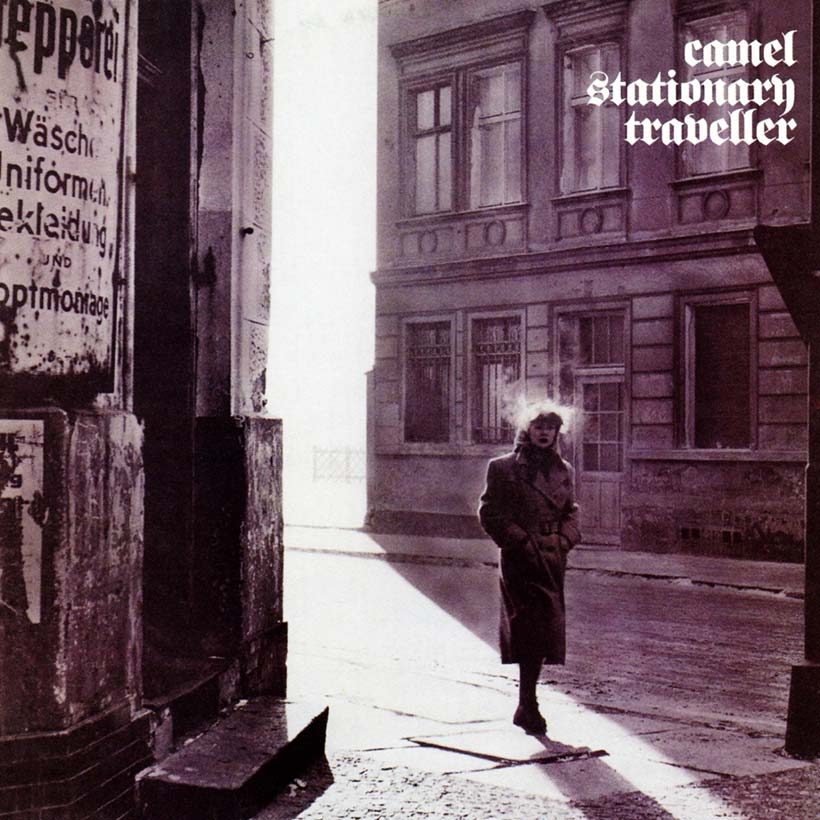Camel’s ‘Stationary Traveller’: A Brave Foray Into Mid-80s Paranoia
Swathed in shadows and Cold War intrigue, Camel’s ‘Stationary Traveller’ tapped into the paranoia of the mid-80s and is well worthy of reappraisal.

Having held their ground during the tornado of punk, Surrey prog-rock stalwarts Camel began the 80s in style with Nude: an ambitious concept LP based on the true story of Japanese soldier Hiroo Onoda, who believed World War II was still ongoing when he was rescued from a remote Philippine island in 1974. It would not be the last time Camel tackled political and emotional turmoil in the 80s, as 1984’s Stationary Traveller would go on to show.
Listen to Stationary Traveller now.
Nude broached the UK Top 40, but Camel’s original drummer, Andy Ward, quit in its wake and the band duly splintered. Under pressure from Decca Records for a hit single, Camel’s prime mover, Andy Latimer, responded by recording the atypically pop-oriented The Single Factor with an array of talented sessioneers including ex-Genesis guitarist Anthony Phillips and Kenny Everett/Alan Parsons Project collaborator Chris Rainbow. The album entered the lower reaches of the UK charts and Camel embarked on a successful 10th-anniversary tour with a line-up including vocalist Rainbow, bassist David Paton, drummer Stuart Tosh and returning late 70s keyboard player Kit Watkins.
Released on April 13, 1984, the band’s tenth LP, Stationary Traveller, was also recorded in a state of flux, with the nucleus of Latimer and Paton joined by versatile keyboardist Ton Scherpenzeel (ex-Dutch progsters Kayak) and a new full-time drummer, Paul Burgess. However, while the album broadly continued in the same vein as its predecessor, delivering concisely structured, four- or five-minute pop songs, Stationary Traveller was a tad more adventurous and certainly the more fully realized of the two.
If not a “concept” LP in the strictest sense, Stationary Traveller’s 10 tracks shared a common theme in that they all related to the trauma that East German citizens faced when leaving their families and attempting to cross the notorious Berlin Wall to the “freedom” of democratic Western society. With the Iron Curtain still dividing Europe, the Wall remained an oppressive physical (and psychological) presence in the mid-80s and, as late as January ’89, GDR leader Erich Honecker warned it could still be standing for another 50 years.
Swathed in shadows and Cold War intrigue, Stationary Traveller adroitly tapped into the paranoia of the time, not least on the yearning, evocative “West Berlin” and the dense, synth-led noir of “Vopos.” Elsewhere, however, a radio-friendly balance was redressed by accessible, guitar-driven tracks such as the Supertramp-like “Refugee” and the edgy, New Wave-esque “Cloak & Dagger Man,” while the swooning ballad “Long Goodbyes” (“Though I hate to go, I know it’s for the better”) provided a dignified, but suitably emotional, finale.
Chiming with The Single Factor’s commercial performance, Stationary Traveller proved a minor UK chart hit and the band’s subsequent tour bequeathed an equally decent live LP, Pressure Points. Both remain releases worthy of reappraisal, though by the time Camel returned with 1991’s John Steinbeck-inspired Dust And Dreams, the fall of the Berlin Wall and the break-up of the old USSR had already consigned Stationary Traveller’s lyrical concerns to the four winds of history.













David Isner
April 17, 2020 at 2:36 pm
Stationary Traveler is still my favorite Camel Album. There’s been criticism that there’s too much drum machines and the like. That may be so, but I think even that was masterly done. I do wonder what it would sound like if humans played all of the instruments.